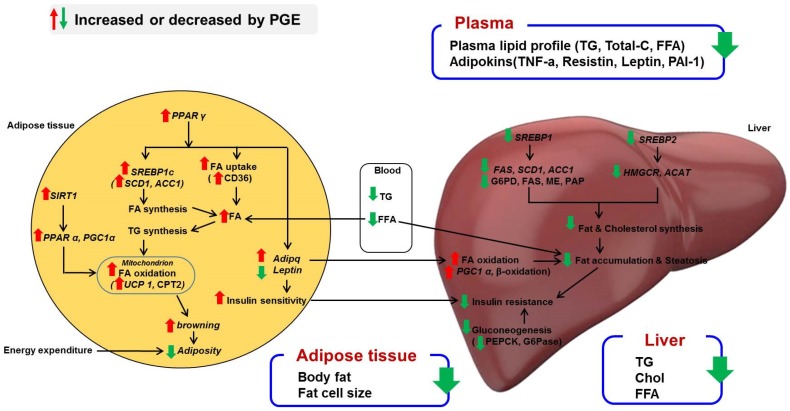Figure 4.
Proposed mechanism for PGE regarding anti-obesity effects. Schematic representation of the role of PGE in amelioration of obesity. PGE can contribute to browning of WAT in diet-induced obese mice through increasing fatty acid oxidation in mitochondria, which promotes energy expenditure. In addition, PPARγ activation by PGE controls adipokines, specifically the insulin-sensitizing hormones adiponectin and leptin. In the liver, PGE downregulates the mRNA expression of lipogenesis and cholesterol synthesis transcription factors, SREBP1 and SREBP2, thereby reducing hepatic steatosis and insulin resistance. PPARγ, peroxisome proliferator-activated receptor γ; SREBP1a, -1c, and -2, sterol regulatory element-binding proteins 1a, 1c, and 2; FAS, fatty acid synthase; ACC, acetyl-CoA carboxylase; SCD1, stearoyl-CoA desaturase; HMGCR, 3-hydroxy-3-methylglutaryl-CoA reductase; ACAT, acetyl-CoA acetyltransferase; SIRT1, sirtuin 1; PPARα, peroxisome proliferator-activated receptor α; PGC1α, peroxisome proliferator-activated receptor gamma coactivator 1-alpha; UCP1, uncoupling protein 1; TNF-α, tumor necrosis factor-α; CPT2, carnitine palmitoyltransferase 2.

